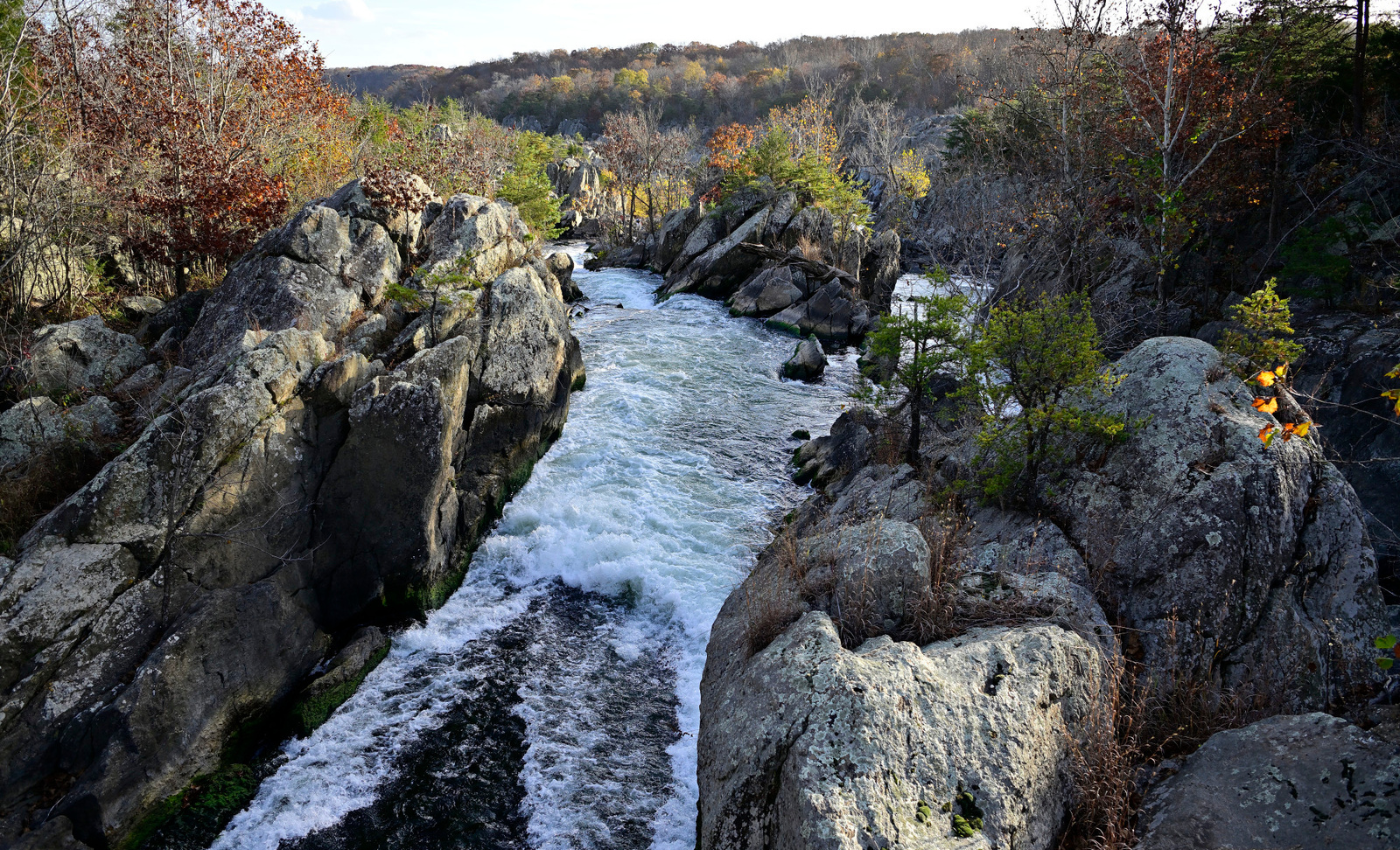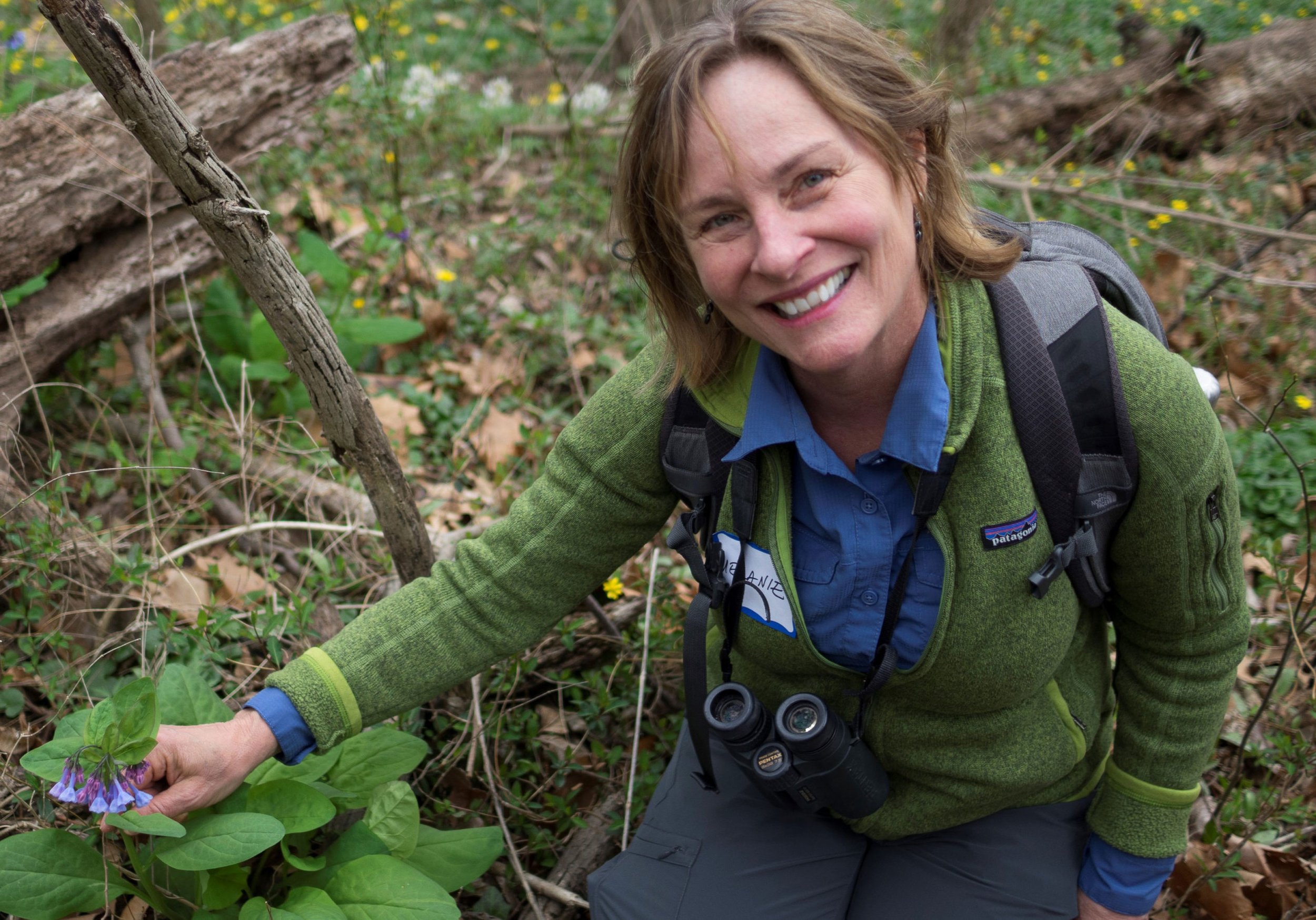Local naturalist and author shares 5 reasons why the Potomac Gorge is a must for nature lovers
/Pack your water, hat, and these tips for your trip from Melanie Choukas-Bradley
potomac river at olmsted island. photo by adam barnard.
When people think about the DC region, they probably immediately think of 'monuments’ and ‘government’ and not ‘a hotspot for nature lovers.’
But us locals know the lands and waters of the Potomac River are home to a treasure trove of outdoor adventures!
The health of the river’s lands, waters, and all the life they support is also deeply intertwined—which is why conserving riverside lands is a key part of our work to protect clean water. Caring for riverside lands helps ensure that the Potomac’s ecosystems are thriving and that local outdoor experiences are safe and accessible for everyone.
Our Nation’s Capital has been known as the City of Trees for many decades and earned its moniker for a good reason (even the L’Enfant Plan looks like a tree!). DC and its surrounding areas boast an incredible diversity of locally evolved flora (and fauna), making it a prime location for nature enthusiasts of all kinds.
melanie choukas-bradley leading a nature walk on Theodore Roosevelt Island. photo by Ana Ka’ahanui
Local naturalist, author, and forest bathing guide Melanie Choukas-Bradley is one of them.
Melanie loves to share her passion for the fascinating natural world we have right in our backyards, and her recent study of the Potomac Gorge is a great source of inspiration for wild adventures close to home.
Whether you love learning about geology, observing plants throughout seasons, snapping photos of local wildlife, or contemplating life while walking in the woods, this 15-mile stretch of river landscape between Great Falls and Theodore Roosevelt Island has something for everyone and will make you fall in love with the Potomac River region all over again.
So, what exactly can you do?
Discover the Potomac Gorge’s geology
mather gorge. photo by andrew benson via flickr (CC BY-NC-ND 2.0)
The Potomac Gorge’s geological history is quite complex—most rocks in the area are metamorphic rocks, which means that they’ve undergone substantial change from their original form due to heat, pressure, and other factors. They first formed in a sea almost half a billion years ago and were later cut through by the force of the Potomac River.
What’s fascinating is that the current location of Great Falls, the famous rapids at the upper end of the gorge, is only about 37,000 years old, while Mather Gorge, the narrow pass directly downstream of the Falls, is even slightly younger, making these extremely old rocks a part of a fairly new geological formation.
🧗🏽 Tip: Want to get up close and personal with the area’s rocks? Visit the Carderock rock climbing area in Maryland that features slick mica schists and cliffs up to 60 feet tall. But be warned, this spot is extremely popular with local climbers!
2. Learn about the Potomac Gorge’s biodiversity
virginia bluebells. photo by mike maguire via flickr (CC BY 2.0)
Did you know that the Potomac Gorge is one of the most biodiverse places in the National Park system? The Potomac River is a major force of nature bringing in nutrients and plant seeds from places as far as the Allegheny Plateau where the river originates.
Take note of the rare forest habitat on Olmsted Island where trees such as Virginia pines, American sycamores, and oaks are perched on rocks with their roots wrapped around the exposed stone. You can also explore the vibrant array of wildflowers such as squirrel corn, Dutchman’s breeches, or Virginia bluebells that can be found in Turkey Run Park or Scott’s Nature Preserve. Another great way to go wildflower hunting is to rent a boat at Fletcher’s Cove Boathouse and paddle up to Chain Bridge. A rainbow of flower colors is almost guaranteed through the summer and early fall!
📱 Tip: Love what you’re seeing, but not sure what it is? Download an app to snap a quick photo and learn about local species literally as you go! We like PictureThis, PictureMushroom, or Seek by iNaturalist.
3. Appreciate the Potomac Gorge throughout the seasons
white-throated sparrow. photo by mr.tinmd via flickr (CC BY-NC-ND 2.0)
“One of the best ways to connect with nature is to do it in your own backyard in all kinds of weather, year round.”
Birding in the Potomac Gorge is spectacular at any time of year. In the winter, you can observe buffleheads and common mergansers (diving ducks) that nest up in the North but come to our region to overwinter. Although most of the common mergansers head north to nest, a few remain and nest here.
Other birds you can spot during the cold months include ring-necked ducks, several species of woodpeckers, brown creepers, ruby and golden-crowned kinglets, or white-throated sparrows. Common ravens, double-crested cormorants, bald eagles, and eastern bluebirds are here year round.
🦅 Tip: Riverbend Park on the Virginia side of the river is a prime birding area and is also a unique spot to view Great Falls and the shallow dam that serves as a water reservoir for DC. Learn more about the park here!
skunk cabbage. photo by matthew beziat via flickr (CC BY-NC 2.0)
Just before spring arrives, you can catch a glimpse (and a whiff) of skunk cabbage that looks and smells like meat and attracts pollinating insects that seek out carcasses. Other plants that typically bloom on the verge of spring include harbinger-of-spring, silver and red maples, American and slippery elms, and the paw paw tree (that attracts the beautiful zebra swallowtail).
Once spring arrives, Potomac Gorge abounds with flowering plants like spring beauty, the fragrant wild blue phlox, yellow trout lilies and white trout lilies (a midwestern species carried down the Potomac River to the gorge and uncommon here), or jack-in-the-pulpit.
In the summer, you can observe woodland sunflowers, halberd-leaved rose mallows, Virginia dayflowers, or pickerelweed. If you love to watch dragonflies, be on the lookout for the cobra clubtail, the great blue skimmer, or the blue-tipped dancer.
🌻 Tip: Late summer or early fall is the perfect time to take mesmerizing photos of blooming goldenrods, asters, and sunflowers.
4. Marvel at the Potomac Gorge’s wildlife
beaver. photo by adam barnard.
The incredible variety of plants is just the beginning of what you can learn about in the area. The Potomac Gorge is also a wildlife lover’s paradise!
A short walk along the C&O Canal will provide spectacular views of snapping turtles, Eastern box turtles, beavers, garter snakes, gray treefrogs, big brown bats, and, of course, families of deer.
Conn Island just above Great Falls houses massive rookeries of great egrets, great blue herons, and cormorants (which can be seen with binoculars from the River Trail above Great Falls on the Maryland side), and smaller rocky islands in the Potomac River below Great Falls are a favorite spot for committees of black vultures.
🐬 Tip: While they don’t live directly in the gorge, the Potomac River is home to many more animal species, including sharks and dolphins. Learn more about how the river supports its abundant wildlife here.
5. Explore the Potomac Gorge’s trails
virginia mallow along the potomac heritage trail. photo by fritz flohr reynolds via flickr (CC BY-SA 2.0)
If you love to hike or go on peaceful nature walks, the trails in the Potomac Gorge will not disappoint you.
The well-loved C&O Canal towpath is a flat, accessible trail that stretches 184.5 miles from Georgetown all the way to Cumberland, MD, and is perfect for walks, runs, and even a beginner-friendly bikepacking trip.
The Potomac Heritage Trail offers scenic views of the Potomac Gorge but is very different from the towpath and includes lots of rock and root scrambling. A fun spot to start your PHT journey is the wooden staircase built by the Appalachian Trail Club that starts at Turkey Run Park (parking lot C; currently closed for construction) and takes you down to the trail. Just a few miles upstream, the trail crosses scenic Dead Run and goes up to the American Legion Bridge, where you can observe more wood ducks or majestic herons.
If you’re up for a bigger challenge, hike or climb up Cow Hoof Rock or The Rooftop for panoramic views of Mather Gorge. The Billy Goat trails and the trails in the Gold Mine Tract also provide amazing adventures! Billy Goat section B is currently closed, but the challenging Billy Goat section A and the more moderate section C are open for hiking.
Many of the Potomac Gorge tributaries offer wonderful hiking, including Scott’s Run and Difficult Run in Virginia and Cabin John in Maryland. And, Theodore Roosevelt Island (at the southern end of the gorge) has a scenic boardwalk through a swamp and along a tidal inlet.
❤️ Tip: Know what Melanie’s favorite thing about nature walks is? The conversations that are just waiting to be sparked! You never know if that person you’re passing by in the woods is a fellow butterfly aficionado and your soon-to-be new friend! Kindness and curiosity are always a good idea and can take you to many great places.















